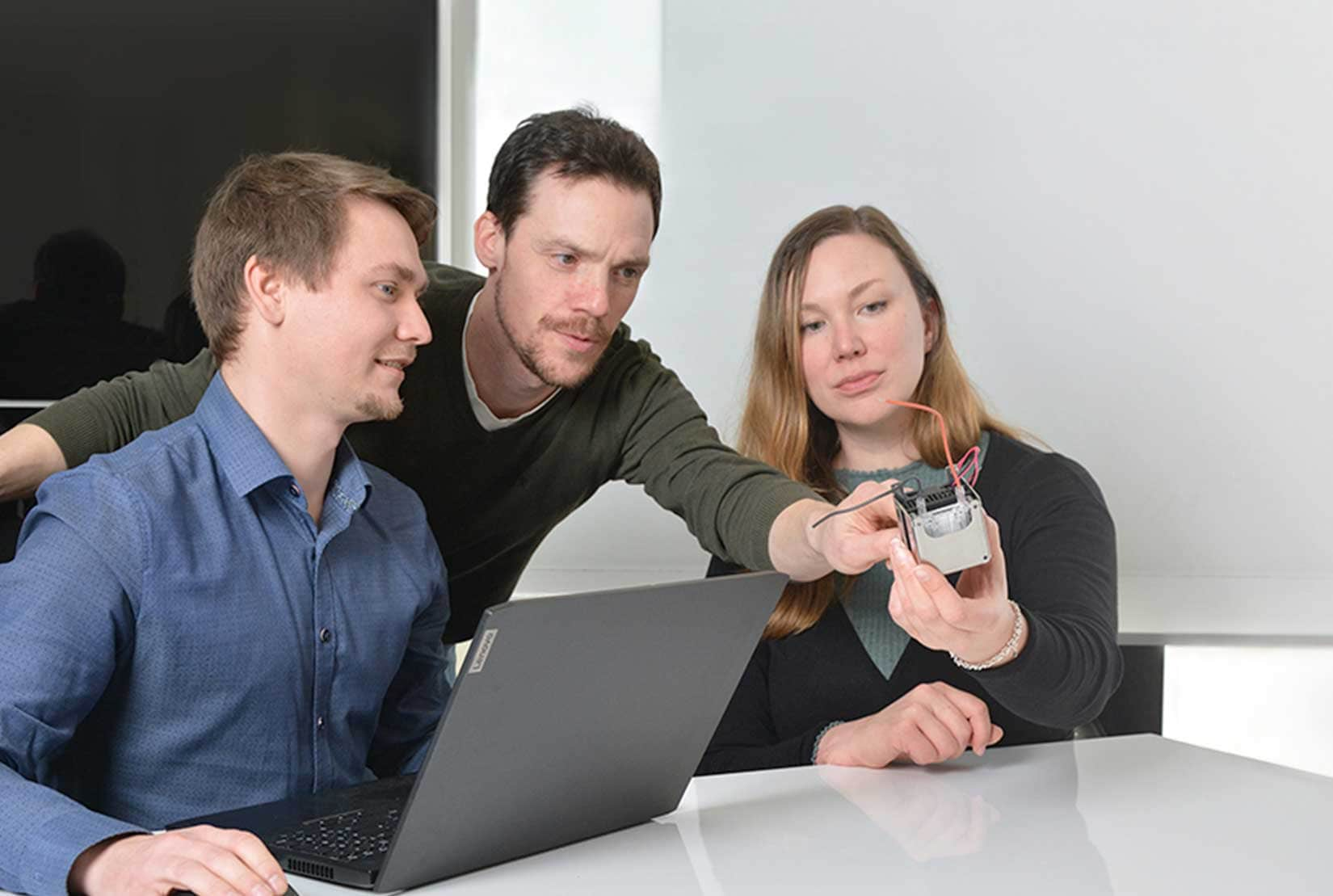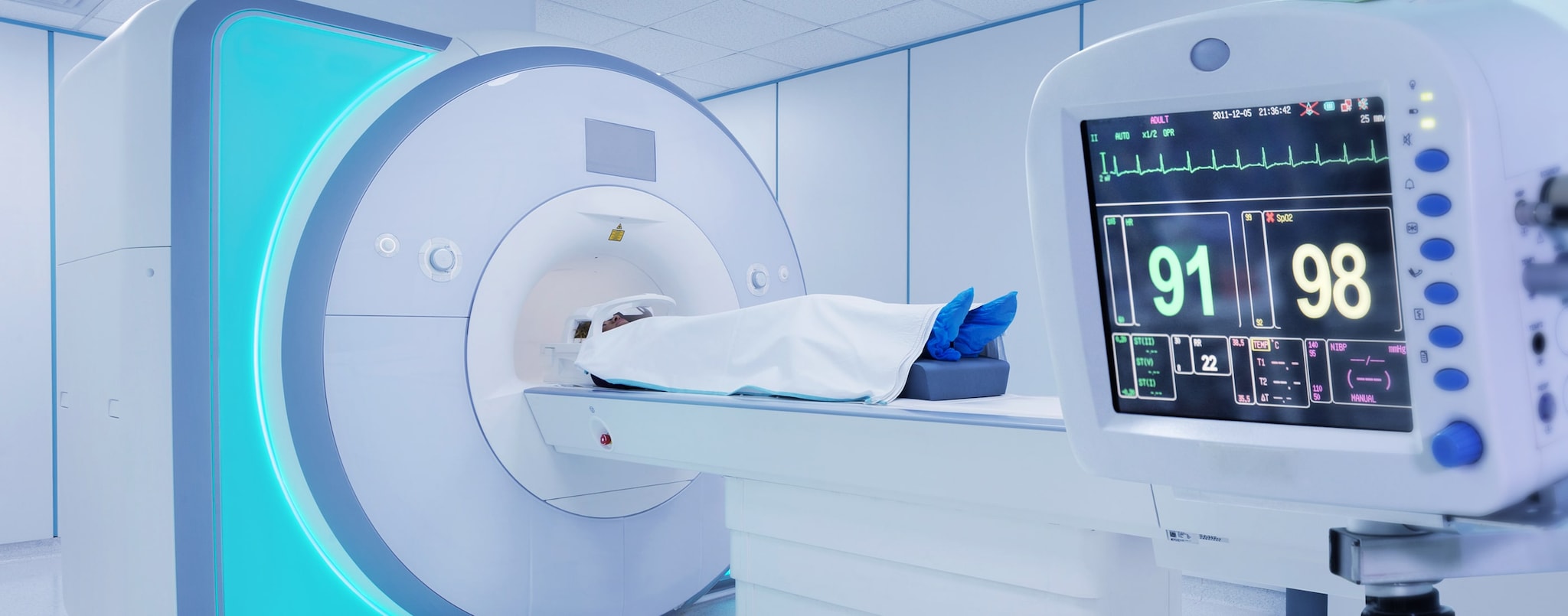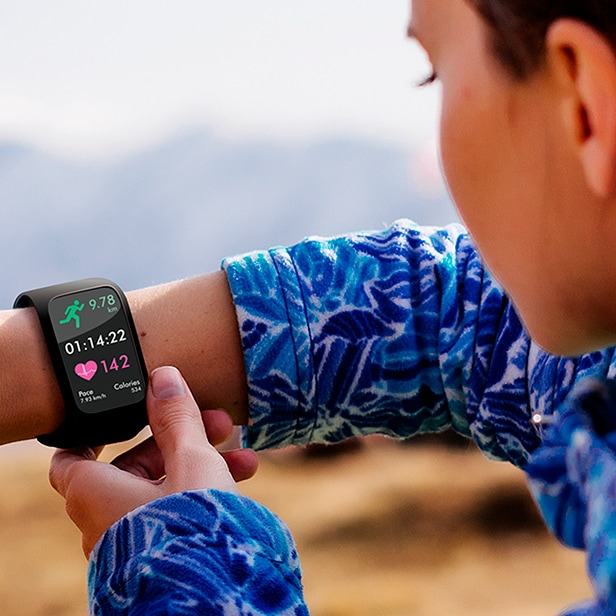

Sustainability and TDK
Ultra-Sensitive Magnetic Sensor Component Has Potential to Unlock New Possibilities for Medical 3D Imaging
The latest digital technologies are driving major advances in medical equipment. TDK has been developing an ultra-sensitive magnetic sensor component capable of measuring subtle biomagnetic fields. In 2024, the company successfully measured cardiac activity using this high-sensitivity magnetic sensor outside a magnetically shield room. Through the development of innovative electronic components, TDK is playing a pivotal role in the transformation of society marked by the creation of groundbreaking medical technologies.
▶Related Article:
[CES 2020] The Magnetic Sensor Detects One Ten-Millionth of Geomagnetism
Advances in medical 3D imaging
Numerous medical technologies have been developed over the years to visualize the body’s internal conditions. These include technologies now widely utilized in the medical field, such as computed tomography (CT), which combines X-rays with a computer to produce cross-sectional images of the body, and magnetic resonance imaging (MRI), which leverages the movement of atoms in a strong magnetic field.
A variety of technologies have been created to help examine the physiological processes of human organs, especially the heart, and methods have evolved over the years. Electrocardiography (ECG)*1 is a standard test used in health check-ups. Electrodes attached to the body detect electrical waveforms produced by the heart’s movement, allowing the activity of the heart muscles and any disturbances in the heartbeat to be examined.
Magnetocardiography (MCG)*2 is a technology that measures the faint biomagnetism*3 produced by the heart to observe cardiac activity. However, biomagnetic fields are so weak—just one ten-millionth of the geomagnetic field—that ultra-sensitive magnetic sensors are required for their precise detection.
The development of the SQUID (superconducting quantum interference device)*4 around 1970 was a significant breakthrough in the measurement of biomagnetism. A magnetic sensor using superconductors, SQUID can be applied as an extremely sensitive magnetic flux meter, enabling the biomagnetism in the heart, muscles and brain to be measured.
However, SQUID requires a shielded room to block magnetic influences from the outside world and liquid helium to cool the superconducting coils, making the system massive and costly.
CT and MRI are technologies effective for the early detection and treatment of diseases, but they both involve very large equipment, limiting the number of medical institutions that can host them. There is a great need for smaller and safer technologies to visualize the body’s internal conditions, and development activities are ongoing at medical device makers around the world.
The power of TDK’s ulta-sensitive MR magnetic sensor component
As a potential alternative to SQUID technology for measuring biomagnetism, TDK has developed the Nivio™ xMR Sensor component. It is a biomagnetic sensor component that utilizes advanced magnetoresistive (MR)*5 technology, with its head measuring 12 by 12 by 74 mm.
The Nivio™ xMR sensor component employs an MR element based on cutting-edge spintronics, a technology TDK has matured over the years through its experience manufacturing HDD heads. By precisely controlling the characteristics of the MR element and fine-tuning its structural design, TDK has successfully reduced the sensor’s size while increasing its sensitivity to levels capable of detecting infinitesimal magnetic fields.
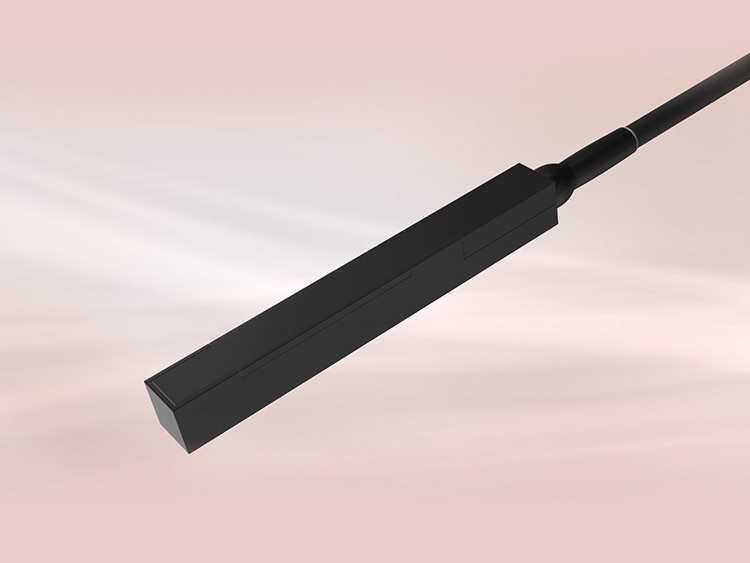
TDK’s Nivio™ xMR Sensor remains highly sensitive even at room temperature, potentially eliminating the need for large cooling systems, like those required with SQUID sensors. Additionally, thanks to its wide dynamic range, it is not saturated by geomagnetic fields, thus potentially enabling use in non-shielded rooms. The sensor component is anticipated to be utilized by device manufacturers to develop smaller, low-cost medical devices that measure biomagnetism.
In 2024, TDK prototyped a new magnetocardiographic apparatus that does not require a magnetically shielded room and, in collaboration with Tokyo Medical and Dental University, conducted magnetocardiography in a standard examination room without magnetic shielding. The results showed they could measure cardiac magnetic waveforms roughly as well as traditional ECG waveforms. Looking ahead, Tokyo Medical and Dental University anticipates that more accessible forms of magnetocardiography will not only enhance the diagnosis of heart diseases but also enable prenatal evaluation of fetal heart conditions through fetal magnetocardiography, as well as assist in predicting the onset of heart diseases, a hitherto challenging endeavor.
Disclaimer: The NIVIO™ xMR sensor is intended for use solely by system integrators, original equipment manufacturers (OEMs) and other third parties as a device component and is not a finished medical device. This component has not been authorized by the U.S. FDA or other regulatory authorities for medical use. Such third parties are solely responsible for evaluating whether the NIVIO™ xMR sensor is suitable for use as a component in their devices and are further responsible for ensuring that their use of the NIVIO™ xMR sensor component is in compliance with the applicable laws and for obtaining any required.
Proposing new uses for 3D visualization of cardiac activity
With Nivio™ xMR , multiple sensor components are placed in an array to detect biomagnetism over a large area. The currently planned prototype medical device is designed to visualize magnetocardiographic data in 2D by placing a unit lined with 36 sensors near the patient’s heart. By arranging sensors on two planes—top and side—it is anticipated that magnetocardiographic data may potentially be acquired from two directions and combined with MRI and CT images to display cardiac activity as 3D images.
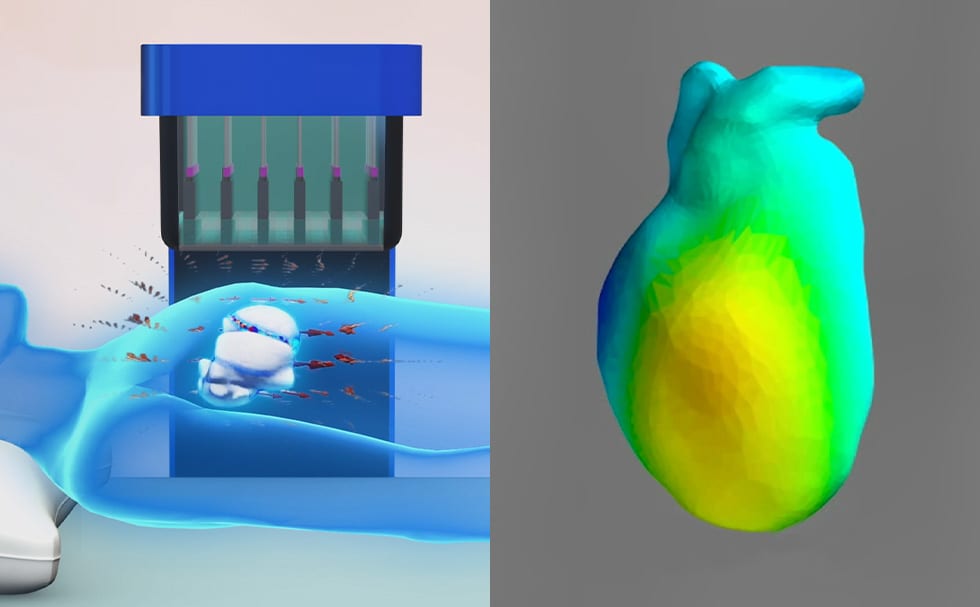
As the World Health Organization (WHO) lists heart disease as number one among the top ten causes of death globally between 2000 and 2019, the heart is one of the most important measures of health in the human body. Advanced magnetocardiographic diagnostics—which has been limited to research laboratories and large-scale medical institutions—could potentially become low-cost and more accessible by utilizing TDK’s ultra-compact biomagnetic sensor component, Nivio™ xMR. Furthermore, TDK’s biomagnetic sensor components hold great potential to engender new industries. Their highly sensitive magnetic detection capabilities are expected to be applicable not only in medicine and healthcare but in a diversity of other fields like the detection of metallic foreign objects and mineral exploration.
Terminology
- Electrocardiography (ECG): The process of recording and displaying the heart’s electrical activity by measuring electrical potentials using electrodes attached to the body’s surface.
- Magnetocardiography (MCG): A technique used to measure and display the weak magnetic fields produced by cardiac activity using extremely sensitive magnetic sensors.
- Biomagnetism: A weak magnetic field produced by biological activities such as heartbeats, brain waves, and muscle movement.
- SQUID: Acronym of Superconducting Quantum Interference Device. A very sensitive device that uses superconductor technology to measure extremely weak biomagnetism.
- MR: Magnetoresistance. A phenomenon where electric resistance changes in response to changes in the magnetic field. It is used in the reading element of HDD heads.


